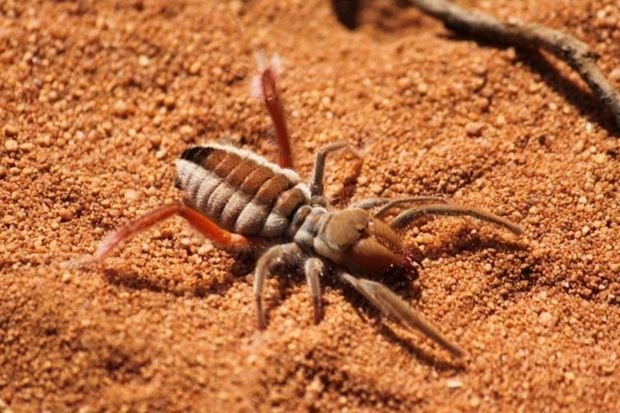BLOG
admin_hotel
05 March 2020
No Comments
The Red Roman Spider
Also known as a Sun Spider or Wind Scorpion, is a strange creature, belonging to the Arachnida class. Although its name suggests it is a spider; this is actually not the case. The only likeness that they share with spiders is that they have eight legs. They also somewhat resemble scorpions. Now, if this fact doesn’t leave you intrigued, it is also worth mentioning that these creatures are not venomous, although they are found to be very aggressive and can inflict painful bites.
This type of arachnid belongs to the group Solifugae, which is derived from Latin and means “fleeing from the sun”. The term “sun spider” refers to the fact that this insect is active during the daytime and escapes the heat of the day by running from shadow to shadow – often people’s shadows, giving the frightening impression that one is being chased! On the other hand, South Africans tend to refer to this critter as a “Red Roman”, or in Afrikaans, as a rooi roman, haarskeerder (“hair cutter”) or baardskeerder (“beard cutter”) because of its sizable jaws and the fact that it often cuts the hair of sleeping people and animals, using the hair to line its nest! It has even been reported that they have left bald patches on dogs, sheep and other animals.
If this isn’t bizarre enough, they prey on spiders, scorpions, small reptiles and even on each other, while still alive. Their chelicerae (a powerful pincher, much like that of a crab’s) are so powerful that they are able to cut through skin and thin bones (such as those of a bird’s), feathers and vertebrae. They are known to stridulate with their chelicerae, producing rattling sounds.
Solifugae are around 70 – 160mm in length and red-brown in colour. Furthermore, these insects appear to have ten legs, but in fact have eight, like most arachnids do. The first pair is shorter and are actually “false legs” (referred to as pedipalps) which act as sensory organs, much like the antennae of insects. These appendages do not completely touch the ground and are used for feeding, fighting, climbing smooth surfaces, for detecting obstacles and for catching flying prey.
Red Romans are known to inhabit deserts, preferring warm temperatures. They live under rocks and in sandy ranges – so it’s unlikely that you’ll see them all over the place – but should you find yourself in dry and hot regions, keep your eyes peeled for these hostile, hair-cutting, shadow-hopping critters!

Sigurwana Lodge ® 2020
Developed by ROCWWA | Digital Marketing Agency in Houston


